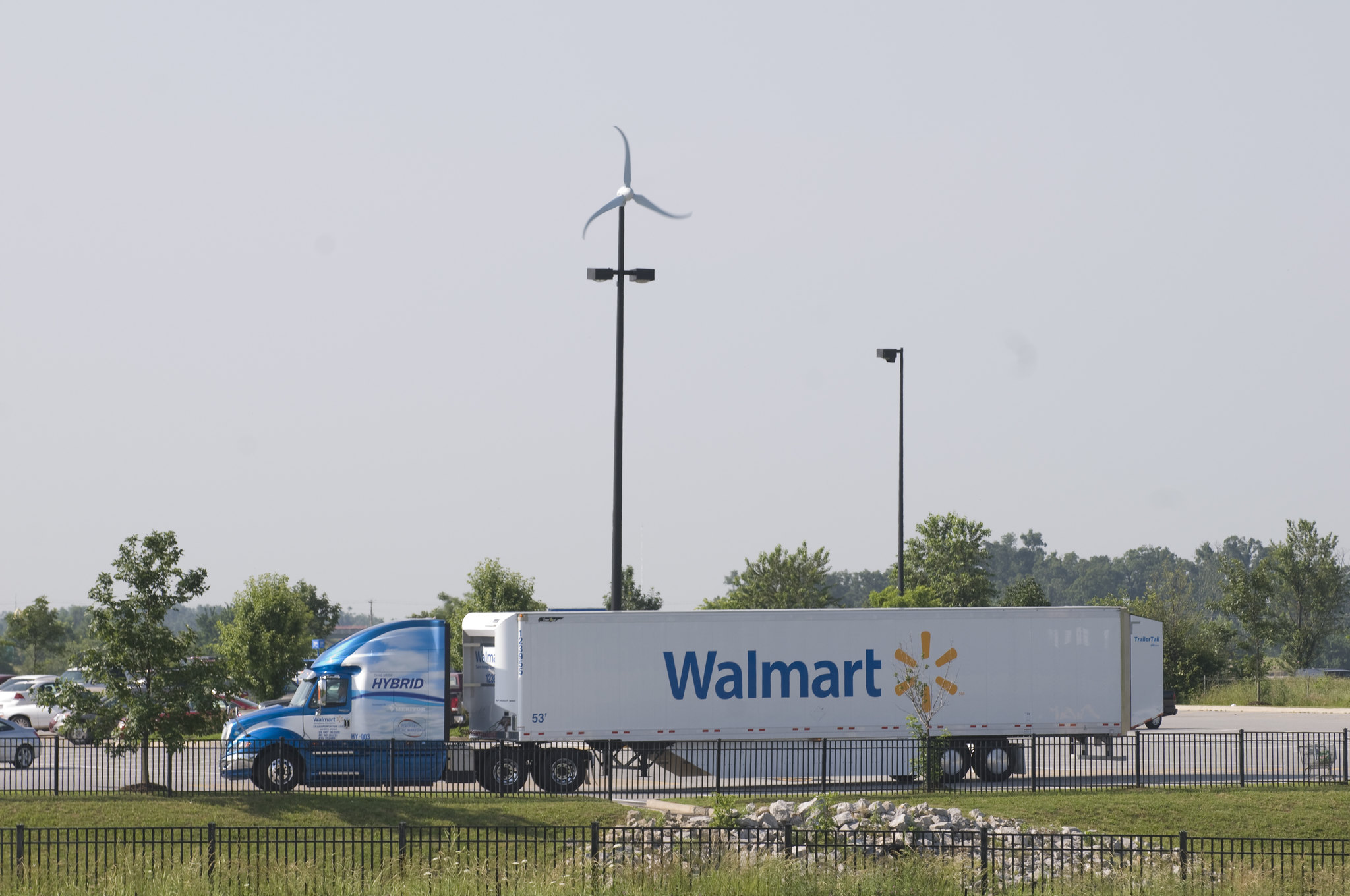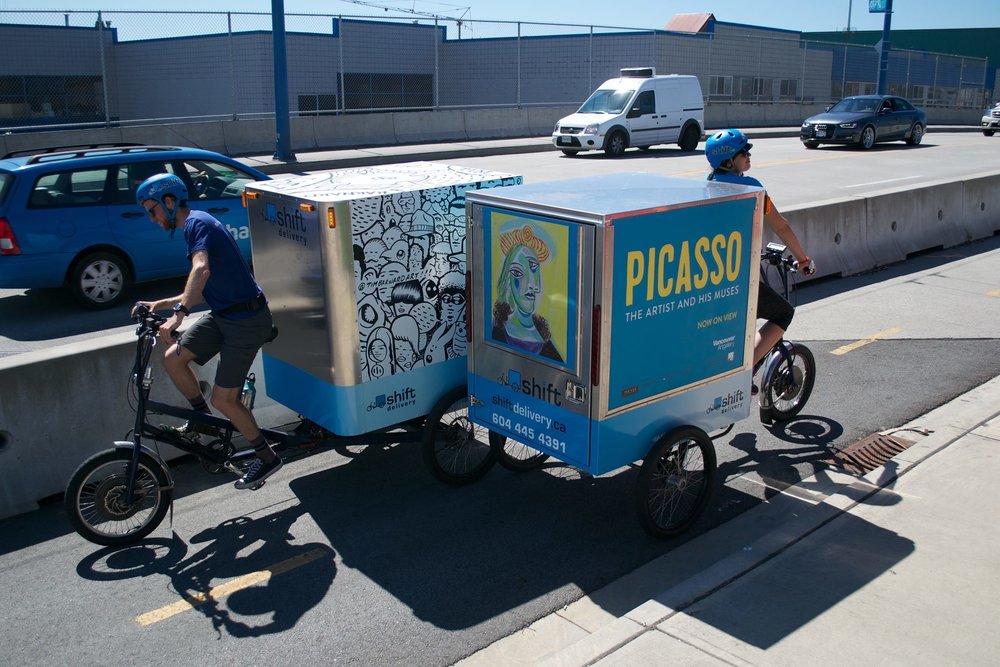A cargo ship makes its way up the Cooper River to the North Charleston port terminal
Credit: City of North Charleston under CC BY-SA 2.0
Online shopping allows us to purchase unique, beautiful items from anywhere on the planet. Complex supply chains transport items all over the world from production to purchase. But the emissions footprint of all this global shipping is enormous, and only getting bigger. Because of this, it’s crucial for companies to invest in making the shift to more sustainable approaches, fuels, and technologies.
Sustainable global supply chains
After you order a pair of sneakers online, they seem to simply appear on your doorstep. The truth is, their arrival isn’t magic, but the result of complex global supply chains that transport raw materials and final products alike from point A to B. Let's imagine this particular pair was manufactured in Vietnam, made from cotton imported from Turkey and rubber from China. After manufacturing, the shoes are then shipped to a warehouse in the US. Once your order is placed, the shoes will go from the warehouse all the way across the country, through transportation hubs, where it is finally delivered to your home.
All this travel has a major cost for the environment - global freight makes up 7% of the world’s emissions and is set to increase fourfold by 2050. Luckily, many companies are investing in making their supply chains more sustainable, especially in the context of rising fuel costs.

A long line of cargo ships approaches the port of Singapore Credit: Prayitno Photography under CC By 2.0
Global shipping by sea
Currently, about 90% of the world's trade is transported by sea. That means that the raw materials for that pair of sneakers, as well as the shoes themselves, were likely packed into a container and put on a cargo ship. Cargo ships almost exclusively use fossil fuels, and produce 3% of global greenhouse emissions, more than the aviation industry. This could rise to 17% of global emissions by 2050.
Though there is not yet a leading solution for cargo ships to shift away from fossil fuels, there are promising technologies in development. The world’s first hydrogen container ship went on a test voyage in early 2022. In 2020, The International Council on Clean Transportation (ICCT) found that it was realistic to shift the vast majority of voyages in a busy China-to-US shipping corridor to hydrogen fuel with only minor changes to the shipping companies’ functioning. For example, they suggest “replacing 5% of cargo space with more hydrogen fuel or by adding one additional port of call to refuel.”
Danish shipping company Maersk has started using methanol, a renewable wood alcohol, as a more sustainable fuel. Methanol is an appealing solution for shipping companies because it can be used as a direct replacement for fossil fuels without major modifications to ships’ engines or reductions of cargo space. Despite the promise of this fuel, its limited availability makes it unlikely to scale quickly. As these fuels continue to develop, slow steaming of cargo ships can help reduce fuel use and emissions.

A Walmart hybrid truck Credit: Walmart under CC By 2.0
Long-haul trucking powers internal US shipping networks
Once in the US, your sneakers will probably be moved by truck. While the technology needed to enable use of electric vehicles for trucking is accessible, infrastructure presents a challenge. With charging stations few and far between, batteries need to be larger, more costly, and heavier for the trucks to haul. Alternative fuel trucking corridors are being explored to address this challenge. On the West Coast, one is now in development, with a charging station every 50 miles. A successful collaboration between a truck stop and EV charging company also enabled the expansion of the availability of charging stations.
But uptake of new technologies is costly and will take time. For the many trucks that run on fossil fuels, data can help trucking companies plan routes that use less fuel by optimizing weight, routes, and idle time. It can also enable them to give feedback to drivers on idling, shifting, and speed, as well as monitor vehicle performance and ensure basic maintenance and tire pressure and wear. Retrofit technologies like a piece for the top of a truck cab to improve aerodynamics can also make a difference in fuel consumption.

Cargo bikes in British Columbia Credit: Province of British Colombia under CC BY-NC-ND 2.0
Innovating last mile delivery
Finally, your sneakers will make the last leg of their journey from a major transit hub into some kind of delivery vehicle en route to your home. This stage of the supply chain is known as last mile delivery, and it is seeing a surge of innovative approaches. For example, Wal-Mart has signed an agreement with Canoo to purchase 4,500 all-electric delivery vehicles for local delivery of online purchases.
E-bikes are being used by USPS and other delivery services like Dutch-X, and are especially effective in big cities, where traffic gridlocks and limited parking and cargo spaces make delivery by truck challenging, inconvenient, and even unsafe for others on the road. Delivery drones are being piloted, and have so far delivered goods ranging from pizza to medications.
The future of online shopping
Living in a world where you can purchase pretty much anything under the sun online is pretty amazing, but comes with a cost for the environment. Luckily, new technologies present a promising way to reduce the footprint of our purchases. But doing so requires major shifts in how companies are doing business. As consumers, we have the ability, and responsibility to advocate for regulations that support and encourage uptake of new ways of doing business. Grants and incentives for companies to make these shifts, and penalties for those who don’t are one effective way to make it make economic sense to take a leap and adopt greener technology.
